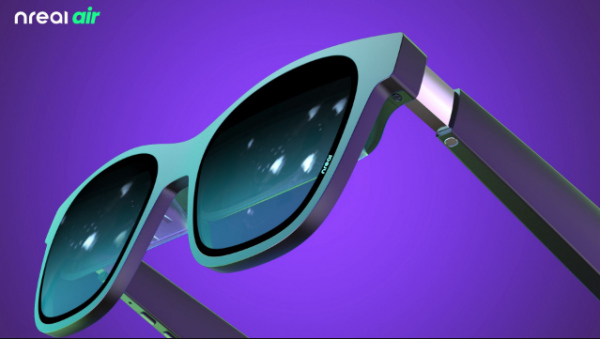Nreal Rebrands to to XREAL
Augmented reality hardware manufacturer Nreal has rebranded to XREAL. The China-based XR startup also announced an adapter for its Air Glasses product that will support wide-ranging devices and is set to be released in July this year.

In late 2021, the company launched its Nreal Light glasses in the US market. These AR glasses can overlay virtual objects in the wearer’s real-world environment and cost only $600. The Nreal Light AR glasses are also compatible with some flagship Android phones.
In 2022, Nreal launched the cheaper Nreal Air virtual monitor glasses that cost just $380. The Nreal Air does not have tracking cameras and has no true AR capabilities. Since its release, the company has been mainly focusing on these media glasses. With the rebranding to XREAL, these glasses are now called XREAL Air. The Nreal Light AR glasses have now been pushed to the back burner and are rarely mentioned in the company’s communique.

Rebranding Prompted by Trademark Disputes
In a statement following the rebrand, Nreal stated it has been facing disputes on the Nreal mark and that they had been “resolved amicably.” However, as it expands its footprint, the company saw it fit to rebrand to XREAL, a new mark that will enable it to “uniquely distinguish” itself as a leader in the augmented reality industry.
One of those lawsuits was filed in 2021 by Epic Games and alleged that the Nreal name “looks and sounds virtually identical” to the Unreal game engine (owned by Epic Games).
The main purpose of Nreal’s Air media glasses is to provide a virtual display for users’ existing devices. The AR glasses currently support USB-C devices only such as laptops, Android phones, and iPads.
Air’s virtual display is fully locked on the wearer’s head in most devices. In a few Android phones and Apple Silicon Macs, the device’s virtual display will stay in place as the wearer’s head turns (3DoF).
XREAL (formerly Nreal) recently announced a Beam adapter for providing 3DoF tracked experience for all devices and which also supports iPhones through wireless casting, and game consoles through HDMI to USB-C.
A combination of the Air and Beam adapter enables you to practically carry around a portable virtual monitor for a docked Nintendo Switch, for instance.
The current transparent AR optics still feature a very narrow field of view so users will only see the full virtual screen at once when it is either positioned some meters from you or if it is relatively small. For a massive virtual screen at a reasonable viewing distance, you will need to turn your head often as you would when viewing a real TV.
Beam features two USB-C ports. In wire devices, one of the ports is for video input while the other is for powering the glasses for approximately three hours through the built-in battery. For applications involving wireless casting devices, the other USB-C port can be used for continuous charge and play.
According to XREAL, support for DRM content will initially only be available in the wired mode with wireless casting set to get DRM support at a later date before the end of the year.
Later in the year, the XREAL Air glasses will also receive an update to support a refresh rate of 90Hz which would enable smoother head tracking.
Preorders for the XREAL Beam start on Thursday and the company has said it will be globally available from the second half of July. Pricing details haven’t been provided yet.
https://virtualrealitytimes.com/2023/05/31/nreal-rebrands-to-to-xreal/https://virtualrealitytimes.com/wp-content/uploads/2023/06/XREAL-600x336.pnghttps://virtualrealitytimes.com/wp-content/uploads/2023/06/XREAL-150x90.pngBusinessAugmented reality hardware manufacturer Nreal has rebranded to XREAL. The China-based XR startup also announced an adapter for its Air Glasses product that will support wide-ranging devices and is set to be released in July this year. In late 2021, the company launched its Nreal Light glasses in the US...Rob GrantRob Grant[email protected]SubscriberVirtual Reality Times - Metaverse & VR
